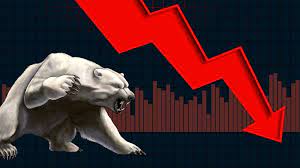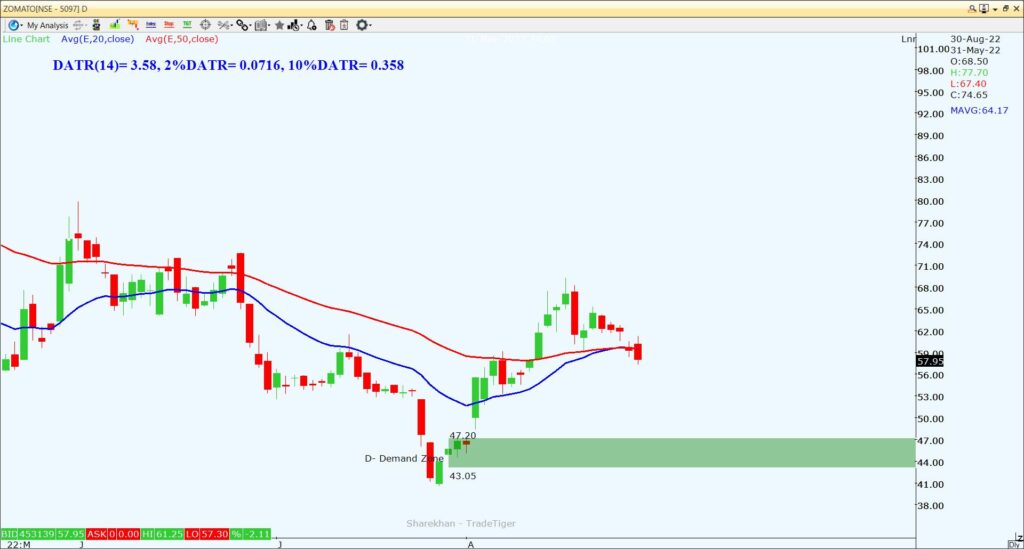
Why is Zomato falling so much?
Zomato launched its IPO of ₹9375 Cr at an issue price of ₹72 to ₹76, it was oversubscribed 7.45 times in the retail category and 51.69 times in the QIB category.
The Zomato IPO was hyped considering it was still a loss-making company at the time of IPO. It still gave listing gains and the price went to ₹138 high, but this was short-lived as it recently hit a low of ₹40.
In this blog, we will exactly know what went wrong, what should be done and why is Zomato not a good investment option in the present situation.
What is Zomato?
Zomato, founded by IIT alumnus Deepinder Goyal and Pankaj Chaddah in July 2008 is a food delivery company that offers services like gifting food to others, food delivery, viewing menus and user reviews and ratings of restaurants.
It was only in 2015 when they entered into food delivery, before that it was just having two features that are seeing menus and reviewing restaurants.
Zomato’s Multi-Stream Revenue Model
Zomato has many streams of earning revenue, these are mainly divided into segments:
- Consumer Segment: In this segment, there are sub-revenue streams which help Zomato earn from customers- (i)Delivery Charges: Customers are charged certain delivery charges based on the location they are living by Zomato. (ii)Subscription Charges: In 2017, Zomato launched Zomato Pro which was a subscription model and offered benefits like discounts, faster deliveries, dining offers etc.
- Business Segment: In this segment, there are sub-revenue streams which help Zomato earn from businesses i.e the restaurants on this platform. (i)Brokerage: Zomato takes commissions on each order from restaurants. (ii) Advertising: For restaurants to be put on top and rank them higher than their competitors, Zomato charges advertising fees from restaurants. This is done by restaurants to increase their presence on the app.
- Business Consulting: Zomato has a data bank as they get to know everything about the customer when they order from the app. This data is shared by restaurant owners and future restaurant owners who want to start their restaurants.
- HyperPure: Recently started by Zomato in 2019, the main purpose of this was to procure raw materials in bulk and supply them to the restaurants, in this way Zomato earned a lot of revenue. This has generated a revenue of ₹2.7 billion in Q1 FY23
- Zomato Kitchens: Restaurants are offered cloud kitchens where they can get a space of roughly 300sq.ft and run their daily operations and deliver food online using the logistics of Zomato by paying a certain fee.
WHY IS ZOMATO FAILING AND ITS SHARE PRICES FALLING?
Zomato hasn’t been able to give any profits to date. The increase in revenue from FY21 TO FY22 was 110.23% which is less than the increase in expenses which was 145.55% this is why the adjusted EBITDA loss has increased from ₹3.3 billion in FY21 to ₹9.7 billion in FY22.
Zomato has heavily spent on advertisement and sales promotion which has increased their expenses. In Q1 FY23, it spent 2776 million rupees on the same.
As Zomato has added 300+ new cities in Q4, the contribution of these was only 0.2% to the GOV, but the expenses have increased by 3.6% in the last quarter.
IS THE BLINKIT DEAL A FAILURE OR A GOLDEN OPPORTUNITY?
BLINKIT is bought at a valuation of 4447 cr by Zomato and is a quick commerce delivery which performs grocery deliveries in under 10 minutes.
It has been a loss-making company and Zomato has decided to fund losses of the same by paying out ₹1875 CRORES. As reported by Zomato, the average order value decreased by ₹66 in May.
In the latest shareholder letter of Zomato (Q1 FY23), Deepinder has said that it plans to cross-leverage the customer base of Zomato and Blinkit and he has said that Blinkit will function as an independent app.
He also said that the delivery fleet and tech integration of both of them will increase the efficiency and pace the progress of both Blinkit and Zomato. This can be a really good move and accelerate the performance of both brands if executed in a sufficient way. Looking at the future, Blinkit can be profitable but due to the lack of financials, the current scenario is bleak for Blinkit.
INVESTORS SELLING THEIR STAKE
As Zomato has a 0% promoter holding, the pre-IPO investors were locked to sell their shares for one year from the IPO. That date ended on 23rd July 2022 and heavy selling was seen when the markets opened on 25th July. The price kept falling till the 26th and hit 2. a low of Rs.40.6.
UBER recently sold its entire 7.78% and earned Rs.3088 Cr. The popular taxi transportation company sold its shares at Rs.50.44 per share to two major AMCs Fidelity Investments and ICICI Prudential Life
TIGER GLOBAL, an investment management company sold its 2.34% stake out of the 5.11% it had before the sale. It is estimated to have sold roughly ₹862.3 Cr value of shares.
MOORE STRATEGIC VENTURES sold its entire stake holding in Zomato at Rs.44 per share. It had bought 6347 convertible Series G shares from Nexus Ventures at Rs.191 Cr and sold its entire stake at Rs.187 Cr. Thus faced a loss of Rs.4 Cr
Heavy selling from major investors led to a fall in the prices of Zomato Shares.
WHAT TO DO NOW?
Zomato recently released its Q1 FY23 results on August 1st. The results were surprising as Zomato had reduced its EBITDA loss from INR 2.2 billion to INR 1.5 billion from the previous quarter. Its food delivery business had also hit breakeven.
Zomato has also completed the acquisition of the Blinkit Deal and now it has three components food delivery, Hyperpure and Blinkit.
If you are a person who solely looks at the financials of the company then wait for the next quarter’s results and make your decision, but if you invest based on growth potential then you should definitely buy this stock at the next dip.
WHAT CHARTS ARE SAYING?

As we can see that zomato is in the daily demand zone with entry-level at around Rs. 48 so if the prices don’t breach this demand zone then we can take entry at this point. However, this stock is only for risk lovers.
Demand zone is a zone where institutions pending orders are there and high probability that prices will boom after such zone.
Disclaimer- This is not any advice. These are my personal views. Do your own research before investing.